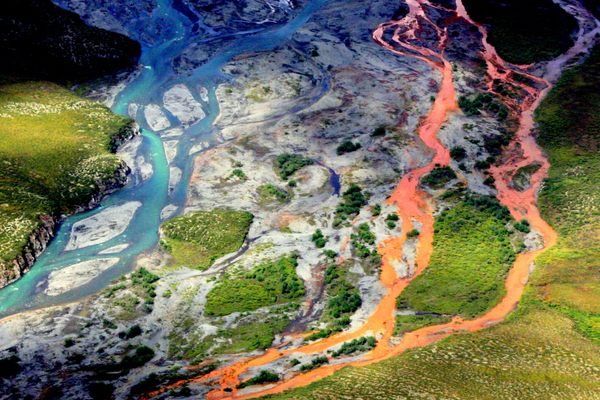A Scientist Invented the Cyanometer Just to Measure the Blueness of the Sky
Horace-Bénédict de Saussure wanted to climb a mountain and mark the sky’s hue accurately.

The cyanometer, invented in the 18th century by the Swiss scientist Horace-Bénédict de Saussure, had one evanescent purpose: to measure the blueness of the sky.
In 1760, when he was 20 years old, Saussure traveled from his home in Geneva to the base of Mont Blanc, the highest mountain in the Alps. Saussure, a brilliant student from a wealthy family, had already finished his studies at the Academy of Geneva, where he would soon be made a professor, at just 22 years old.
But at this moment he was free to explore, and he was captivated by the mountain, which had never been climbed—not all the way to its top, 15,774 feet above sea level. The young scientist dreamed of standing at the summit, and he offered a generous reward, of an unspecified amount, to the first person who reached it.

Twenty-seven years later, Saussure stood at the top of Mont Blanc. The year before, in 1786, a crystal hunter and a doctor had made it to the summit, and now, with the help of a mountaineering team, Saussure had reached the pinnacle, too.
At the time, mountain climbers had observed that as they climbed higher, the sky turned a deeper blue. “Ce phénomène m’avoit souvent frappé,” Saussure wrote. “This phenomenon had often struck me,” and as he prepared to summit Mont Blanc, he wanted a way to measure the color of the sky. He brought with him pieces of paper colored different shades of blue, to hold up against the sky and match its color.
In the next few years, Saussure refined this idea into a tool for measuring blueness, his cyanomètre, a circle of paper swatches dyed in increasingly deep blues, shading from white to black. Using this tool, which in its most advanced iteration included 52 blues, he showed how the color of the sky changed with elevation.
The color he had measured at the top of Mont Blanc, he later determined, corresponded to a blue of the 39th degree; that measurement was later surpassed by the famous geographer Alexander von Humboldt, who took his cyanometer on journeys across the Atlantic, to the Caribbean, the Canary Islands, and South America, measuring the color of the sky all the while. In 1802, Humboldt took the tool on an ascent of the Andean mountain Chimborazo, where he set a new record, at the 46th degree of blue, for the darkest sky ever measured.

Saussure had a theory for what these gradations might show. He believed the color of the sky was related to the color of moist particles found in the atmosphere and that these color measurements might show that to be true. But the many measurements made with his tool yielded little insight, and the cyanometer fell out of favor as a scientific tool. When the true cause of the sky’s blueness, the scattering of light, was discovered decades later, in the 1860s, Saussure’s circle of blue had already fallen into obscurity.
Today, the Musée d’histoire des sciences Genève has an 18th-century cyanometer among its holdings, but there is occasional interest in reviving Saussure’s poetic idea in new contexts. In 2009, a German artist created a “new cyanometer,” and last year the artist Martin Bricelj Baraga brought a modern cyanometer to a public square in Ljubljana, the capital of Slovenia, for a six-month installation. Ljubljana’s cyanometer broadcast data about air quality, but it did what Saussure originally intended—it allowed people to note the particular blueness of the sky and its subtle changes over the course of a day.

























Follow us on Twitter to get the latest on the world's hidden wonders.
Like us on Facebook to get the latest on the world's hidden wonders.
Follow us on Twitter Like us on Facebook